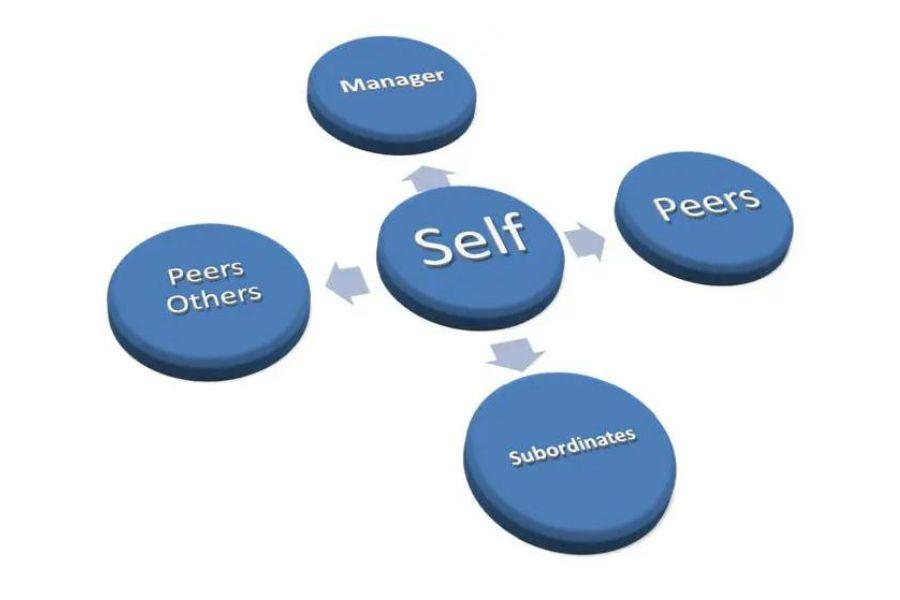
The use of 360 degree feedback for evaluating employee performance and promoting professional growth has become increasingly popular. However, like any organisational process, it can present challenges. This article discusses the main difficulties that may arise when implementing 360 degree feedback and suggests ways to overcome them. By addressing these challenges directly, organisations can make the most of this comprehensive evaluation approach and reap its benefits.
Challenges in 360 degree Feedback
It’s crucial but difficult to guarantee the validity and dependability of feedback in a 360 degree feedback process. Feedback quality may be impacted by variables like accuracy, bias, and anonymity. In order to overcome this, organisations should train participants, lay out clear expectations, stress the value of candid, constructive criticism, and develop precise standards for grading behaviours and skills.
It’s crucial to reassure participants that their comments will be kept private and anonymous in order to ensure honest and accurate feedback.
Additionally, it’s crucial to choose objective raters who have firsthand experience with the recipient’s performance and to teach them in providing constructive criticism while avoiding common biases.
Most Difficult Challenges
When integrating 360 degree feedback, challenges like resistance and fear can arise. Employees could be wary about getting feedback from many sources and worried about unfavourable comments. It is crucial to communicate clearly in order to overcome these obstacles.
Participants must comprehend the objective and advantages of 360 degree feedback, with a focus on its contribution to personal development and growth rather than punishment.
How to Overcome These Challenges?
Motivating people to build plans based on feedback is the first step in development planning. To address areas for improvement and play to their strengths, they should decide on actions and objectives. In addition, people should be given access to resources including mentoring opportunities, workshops, and training programmes.
Organisations should offer thorough training to all participants, including those offering feedback, those receiving it, and management, to enable a more efficient and relevant feedback process. This training should concentrate on developing concrete development plans, understanding feedback, and providing constructive criticism.
Consistency
To maintain consistency in assessing behaviours and competencies among various raters, organisations should develop clear and standardised evaluation standards that match their aims and values. As a result, the likelihood of bias or inconsistent feedback will be reduced.
Grading and evaluating
When grading and evaluating people, consistency and calibration are crucial. By holding calibration sessions, evaluators can better align their understanding and interpretation of rating scales and criteria, resulting in consistent feedback. Additionally, these sessions aid in locating and correcting any biases or rating inconsistencies.
Throughout the feedback process, beneficiaries and evaluators should both receive ongoing support. Offering tools like coaching or training courses can assist people in comprehending and acting upon the feedback they get. Making sure that development plans are carried out and giving advice ensures that the feedback results in real growth.
Continuing assistance and resources
Offering continuing assistance and resources to both recipients and raters is crucial for the 360 degree feedback process to be successful. To assist people in interpreting and acting on the feedback they get, this includes training programmes, coaching, and mentoring. To achieve significant growth and improvement, development plans should be monitored and guidance offered.
Additionally, it is crucial to routinely analyse and assess the process’ efficacy, get participant input, and make any improvements to improve the process. To guide subsequent revisions, data on the effect of the feedback on performance at the individual and organisational levels should be gathered.
How to implement a 360 assessment tool?
Clarify the goals and outcomes you want to achieve before beginning a 360 assessment tool. This involves pinpointing the precise competencies, behaviours, or skills that require development and coordinating them with the objectives and core values of the organisation.
Gaining the support of senior leaders and managers is also crucial. Do this by outlining the advantages and how it fits with the organisation’s strategy. Securing funding and resources for implementation is part of this.
Design questionnaires with rating scales, open-ended inquiries, and competency-based assessments that are precise, pertinent, and in line with the process objectives if you want to make use feedback tools.
Depending on their familiarity and interactions with the person being evaluated, choose the relevant participants, such as supervisors, peers, subordinates, and external stakeholders. Take into account their suitability and reliability as raters.
Important Note
It’s critical to ensure secrecy and anonymity in order to foster a secure environment where participants feel free to share candid feedback. The aim of the process should be understood, appropriate rating procedures should be used, and constructive comments should be given. Raters should also receive training on how to provide successful feedback. Fair evaluations should be emphasised, and biases should be corrected.
Give advice and assist people in developing individualised development plans that include self-evaluation, goal-setting, and concrete steps for change. Keep a continuing eye on the results of these initiatives and provide support, coaching, or mentoring. Review and reevaluate objectives and results frequently to guarantee ongoing development.
Mercer | Mettl – Performance Review
A tool used to evaluate an individual’s performance review, talents, and areas for improvement is the Mercer | Mettl 360 degree feedback performance review. It is offered by Mercer | Mettl, a business that specialises in talent evaluation and psychometric testing and is adaptable and user-friendly.
Companies can use the pre-made surveys that Mercer | Mettl provides or designs their own based on their own requirements. Companies can now tailor the feedback process to fit their particular performance standards thanks to this.
Mercer | Mettl enables feedback to be gathered from a variety of sources, including clients, coworkers, subordinates, and managers. This feedback offers a comprehensive assessment of a person’s performance and behaviour within the organisation.
Conclusion
To summarise, organisations can evaluate and grow their staff using the Mercer | Mettl 360 degree feedback performance evaluation. It emphasises anonymous feedback and provides customisable questionnaires as well as ratings from numerous raters. This approachable platform encourages openness, expansion, and ongoing development.
Organisations can increase self-awareness, strengthen connections, and achieve both individual and organisational success by utilising various perspectives. The Mercer | Mettl 360 degree feedback performance assessment is, all things considered, a useful tool for businesses wishing to assess and grow their personnel.







